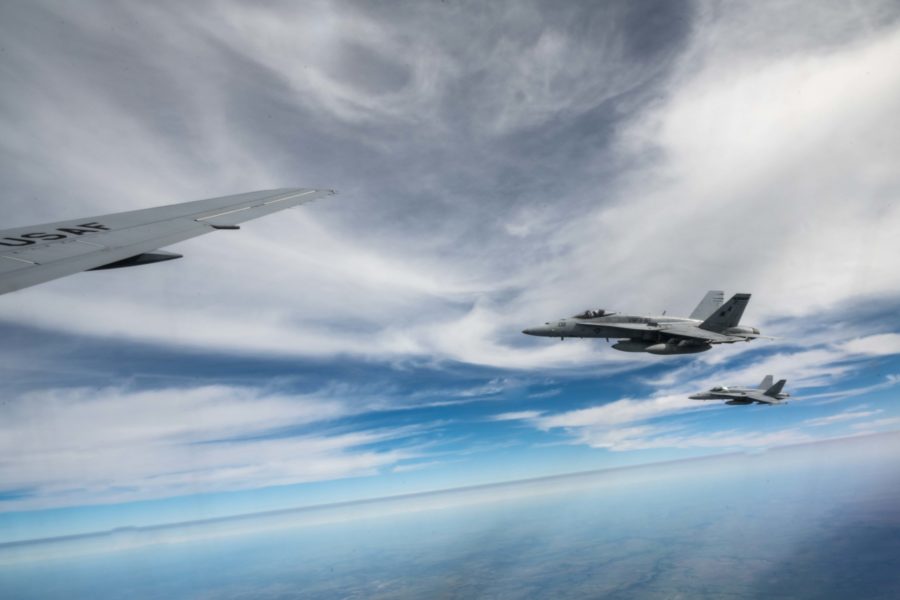With KC-135s and KC-10s surging forward to help with the ongoing airlift out of Afghanistan, KC-46s are picking up some slack back home with the new tanker’s first operational taskings under Air Mobility Command’s plan to have the Pegasus start flying limited operations.
KC-46s have flown three missions tasked by AMC’s Tanker and Airlift Control Center. During the first on Aug. 11, a KC-46 from the 22nd Air Refueling Wing at McConnell Air Force Base, Kan., refueled F/A-18s using the tanker’s centerline drogue system. The Super Hornets were from Marine Fighter Attack Squadron 112 at Fort Worth, Texas, according to an AMC release.
“The timing is perfect,” said Brig. Gen. Daniel A. DeVoe, commander of the 618th Air Operations Center, also known as the TACC, at Scott Air Force Base, Ill.
AMC boss Gen. Jacqueline D. Van Ovost in February announced the interim capability release plan, which allows KC-46s to provide limited refueling operations. KC-10s and KC-135s can fly more real-world operational missions, plus those heavily tasked aircrews get more downtime.
“We will now commit the KC-46 to execute missions similar to the ones they’ve been conducting over the past few years in the Operational Test and Evaluation plan, but can now include operational taskings from U.S. Transportation Command,” Van Ovost told reporters at the time. “For example, today the KC-46 may provide aerial refueling for F-16s participating in a U.S.-based training exercise. Under this new approach, if AMC is tasked to provide AR support for an operational coronet mission to move F-18s overseas or an operational B-52 mission, the KC-46 is on the table, which frees up KC-135s and KC-10s to execute other combatant command deployments that the KC-46A is presently unable to support with its existing deficiencies.”
In early July, AMC announced KC-46s could be tasked to refuel receivers using its centerline drogue system. This allowed the KC-46 to provide fuel to F/A-18s, as was seen in the Aug. 11 mission. In early August, AMC then allowed the KC-46 to be tasked to refuel some aircraft with its boom, including other KC-46s, B-52s, and notably, C-17s. Globemaster IIIs have been heavily tasked as part of the Kabul airlift mission.
DeVoe said the TACC has “postured the KC-46” to be able to serve as part of the airbridge for aircraft leaving the continental United States or returning home off the East Coast.
“We haven’t taken it any further than that,” DeVoe said. “But again, in the global puzzle, that can be an important piece.”
“It is not heavily involved, and it is not combat at all,” he said of the tanker’s role as part of the overall airlift.
When the plan was first announced, AMC said KC-46s would not be sent to geographic combatant commands until it is cleared as fully operational. That is still years away as the tanker works through significant issues with its remote vision system and boom. AMC will not give a commander an airframe that is limited, said Brig. Gen. Ryan R. Samuelson, the KC-46 cross-functional team lead.
